You will find that the actual name “antichrist” is only spoken about by the Apostle John a few times in the bible via the verses John 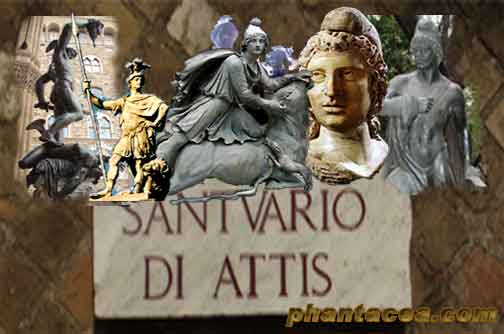 2:18, 2:22, 4:3, and 2 John 7. He tells us that there are “many antichrists” who will appear between the time of Christ’s first and Second Coming, but there will be one great antichrist who will rise to power during the end times, or “last hour,” as 1 John phrases it. He will deny that Jesus is the Christ. He will deny both God the Father and God the Son. He will be a liar and a deceiver.
2:18, 2:22, 4:3, and 2 John 7. He tells us that there are “many antichrists” who will appear between the time of Christ’s first and Second Coming, but there will be one great antichrist who will rise to power during the end times, or “last hour,” as 1 John phrases it. He will deny that Jesus is the Christ. He will deny both God the Father and God the Son. He will be a liar and a deceiver.
The antichrist is mentioned in 1 John 4:1-3 and says, “Beloved, do not believe every spirit, but test the spirits, whether they are of God; because many false prophets have gone out into the world. By this you know the Spirit of God: Every spirit that confesses that Jesus Christ has come in the flesh is of God, and every spirit that does not confess that Jesus Christ has come in the flesh is not of God. And this is the spirit of the Antichrist, which you have heard was coming, and is now already in the world.” (NKJV)
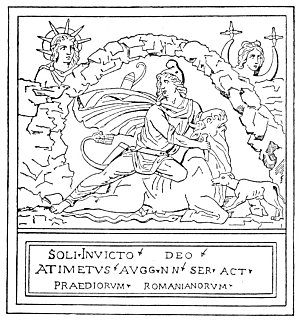 The Apostle John clearly states, “the spirit of the Antichrist, which you have heard was coming, and is now already in the world.” What John is telling us, is that the antichrist who we heard was coming, is actually here in this year 2014 and has been here for a mighty long time.
The Apostle John clearly states, “the spirit of the Antichrist, which you have heard was coming, and is now already in the world.” What John is telling us, is that the antichrist who we heard was coming, is actually here in this year 2014 and has been here for a mighty long time.
In other parts of the bible the antichrist is referred to as the beast or son of perdition, and in Revelation 13:5-8, the antichrist is referred to as “the beast.” The Man of Sin is also usually equated with the Antichrist. He is man of lawlessness who is spoken about in 2 Thessalonians 2:3;
“Don’t let anyone deceive you in any way, for that day will not come until the rebellion occurs and the man of lawlessness is revealed, the man doomed to destruction.”
This Man of Sin “will oppose and will exalt himself over everything that is called God,” and “set himself up in God’s temple, proclaiming himself to be God” (verse 4). Something is said to be “holding him back” (verse 6), though that will be “taken out of the way” (verse 7). A “lawless one” will be revealed (verse 8), whom Jesus will destroy “by the splendor of his coming.”(1)
Who is the antichrist that is also known as the beast, liar, man of sin and lawlessness?
In order to identify who the Man of Sin or Antichrist might be, we need to study the religious traditions of both the Roman Catholic and Eastern Orthodox churches. The Man of Sin is said to come at a time that is called the “End of the World.” It will be when the Grand Monarch or a new Orthodox Emperor, who is also called the Katechon will announce the rebirth of the Holy Roman Empire.
Many people today in places such as the U.S. do not understand the ancient religious history of both the Roman Catholic and Eastern Orthodox Catholic Churches. For those of you who do not know this history, I will briefly explain it.
Before there was a Roman Catholic Church in the West, there was the Greek Catholic Church in the East. From the East came the Christian religion which helped form the Roman Church. This is why the Eastern Church is called Orthodox. The meaning of the word “Orthodox” is the combination of the Greek word orthos and doxa (“glory” as in Doxa Patri, “Glory to the Father”).
The official Orthodox Church was originally known as the Eastern Orthodox Church which was first founded by the Greeks and was also known as the Byzantine Empire. Today the Eastern Church encompasses much of Eastern Europe, with a large emphasis still in Greece, Southeastern Europe, throughout the Middle East, and all across Russia with the Russian Orthodox Church.
At one time, both the Roman Church with its administration center at the Vatican in Rome, and the Orthodox Church which was centered in Constantinople were united. The Pope’s seat was at Constantinople and it was not in the Vatican at Rome like it is today. But later they had separated in an event known as the Great Schism (now, sometimes called the East–West Schism), which is officially dated to the year 1054, but it was a process that occurred over a long period of time rather than a sudden break between the churches. It is said at end times, the faiths will again be united as one and that the Pope will again have his seat at Constantinople by writers such as the French Occultist and Catholic, Eliphas Levi.
This news is interesting because when Pope Francis was nominated as the Vicar of Christ at his Inaugural Mass, his holy guest  was the Eastern Orthodox Church leader, the Patriarch of Constantinople, Bartholomew I. This was the first time that an Orthodox Church leader attended an Inaugural Mass in over one thousand years. In a gesture to Christians in the East, Pope Francis had prayed with Eastern rite Catholic patriarchs and archbishops before the tomb of St. Peter and the Gospel was chanted in Greek rather than the traditional Latin.
was the Eastern Orthodox Church leader, the Patriarch of Constantinople, Bartholomew I. This was the first time that an Orthodox Church leader attended an Inaugural Mass in over one thousand years. In a gesture to Christians in the East, Pope Francis had prayed with Eastern rite Catholic patriarchs and archbishops before the tomb of St. Peter and the Gospel was chanted in Greek rather than the traditional Latin.
Pope Gregory of Rome who is also a Doctor of the Church and Saint “abhorred the title of supreme or universal bishop,” which had been assumed by the Pope when Constantinople became the seat of empire. Gregory had called it “a diabolical usurpation, and the forerunner of Antichrist.”
WHERE DID THE STORY OF THE ANTICHRIST ORIGINATE?
In studying the history of the world along with religion, I have found that the ancient Holy Island of Crete in the Mediterranean and the surrounding islands are the true birthplace of many different faiths such as Gnosticism, Judaism and Christianity. It is from this island of Crete where many Saints, Church Fathers and even Roman Emperors were born.
People such as Saint Andrew of Crete (Greek: Ἀνδρέας Κρήτης, c. 650 – July 4, 712 or 726 or 740), also known as Andrew of Jerusalem. Saint George, surnamed George of Cappadocia (Latin for the island of Crete) is one of the most honored Saints that you will find in both the Western and Eastern Christian churches. George was made the bishop of Nicomedia in Crete during the late 3rd century A.D., which would become the place of his Martyrdom. Saint Basil the Elder and the grandmother of Saint Basil the Great, Saint Macrina the Elder were both born and died on Crete. In addition, the 1st century Jewish-Roman Historian, Flavius Josephus had married a woman from a royal family on Crete who became his 4th wife and bore him two sons.
Crete was the capital of the religious world for many hundreds of years and which was the first bridge from the East to West that helped create much of the Western civilization we see and live in today. A place that may have been the original birthplace of the Eastern Orthodox Church.
Crete is also home to where much of the Ancient Greek mythology, epics, poems, Gods and Goddesses were created. It is from this 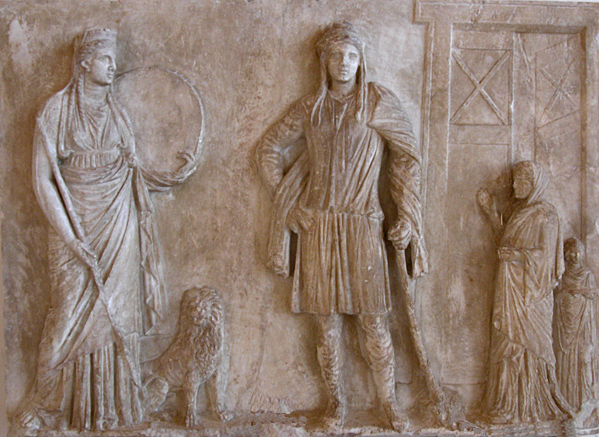 same island where I have found the original story about the “Man of Sin” who was known as Attis, Atys, Attes (Ancient Greek: Ἄττις or Ἄττης). The name Attis signifies “The Sinner,” and according to Herodotus , he was known as the son of the god. The Phrygians are said to be the oldest race in Asia Minor who worshiped Attys as the “only begotten son,” as a savior.
same island where I have found the original story about the “Man of Sin” who was known as Attis, Atys, Attes (Ancient Greek: Ἄττις or Ἄττης). The name Attis signifies “The Sinner,” and according to Herodotus , he was known as the son of the god. The Phrygians are said to be the oldest race in Asia Minor who worshiped Attys as the “only begotten son,” as a savior.
It is interesting to note that to the Cretans, and the Phrygians who are one in the same people; Attys, the sinner was known as the only begotten son of god and a savior. The great festival of Attis began with the ‘Entry of the Reed-Bearers’, which was followed by the ‘Entry of the Tree’, a palm tree with the crucified sinner. To them, he would be akin to who Jesus Christ is to Christians.
The Phrygians can easily be connected to Crete and the mountain where the Judeans had first originated. The mountain on Crete is called Mount Ida which is mentioned in the Iliad of Homer and the Aeneid of Virgil as the Phrygian Ida in classical antiquity. The people of the mountain in Crete are concealed in history over the centuries by a plethora of various names told by numerous historians and authors. Strabo had written, that the various groups known as the Curetes (Kuretes), Corybantes, Idaean Dactyls, Cabiri, and Telchines were names that are often used interchangeably with one another. I have found they have also been known as the Minoans, Phoenicians, Philistines, Judeans, Sea Peoples, white Syrians and the Priesthood of Jupiter or Pan.
One of the important names the Cretans were called by back then was the ‘Idaeans’; and according to Homer, one of their rulers was known as ‘Idomensus,’ the grandson of the ruler of Knossos. Idomensus was said to have fought side by side with the Achaeans against the Trojans in the Trojan War. The children of Idomensus were, whom Homer had called the royal and warlike ‘Idomen.’
The first century Roman-Jewish historian Josephus essentially calls them the Jud or the Judeans (Idameans) of Mount Ida who I have connected today to the biblical Tribe of Judah. In the bible we find the Tribe of Judah was divinely appointed to lead the tribes (1:1-2; 20:18) and were also led by ad hoc leaders known as Judges (see the Book of Judges). The saviour and messiah of the Christian Church, Jesus is also from the Tribe of Judah which would make him a descendant of the Judeans (Idameans) of Mount Ida in Crete; the same place where the legend of the sinner was formulated and possibly the identity of the antichrist.
As I mentioned above, the original legend of Attis comes to us from the island Crete where he was worshipped together with Europa, along with his great Cretan Mother of the earth who was known by several names such as Cybele, Rhea and Agdistis. In Rome, Cybele was known as the Magna Mater. Attis was the consort of Cybele who was often depicted crowned with a crescent, and her symbols were the black cube stone, meteor, cornucopia, mural crown, chariot and lions who fell to earth as a meteor to Mount Ida on Crete. She is also known as the “Great Mountain Mother (Mater Idaea or Idaean Mother)”, who was often depicted in a chariot drawn by lions as if she was circling her pray.
The story of Attis is also told by Ovid (Fasti, iv, 223-372): Attis was a beautiful shepherd beloved of Cybele, who imposed upon him the vow of chastity. Having broken his vow, he was made insane by the goddess, in which condition he unmanned himself. When, in consequence thereof, he attempted to kill himself, Cybele changed him into a fir tree, and decreed that henceforth her priests should be eunuchs. The myth represented the successive death and regeneration of nature, due to the changes of the seasons.
St. Augustine’s statement: “the deliberate sin of the First man is the cause of original sin” (De nupt. et concup., II, xxvi, 43).
The cult of Attis was native to Crete, but at an early date it spread into other parts of Asia Minor and the Greek islands. Traces of it appear at Athens as early as the fourth century B.C., and it was introduced at Rome, probably in conjunction with the cult of Cybele, in 204 B.C. After the official recognition of the cult by the Emperor Claudius, the festival of Attis was celebrated in March with great pomp.
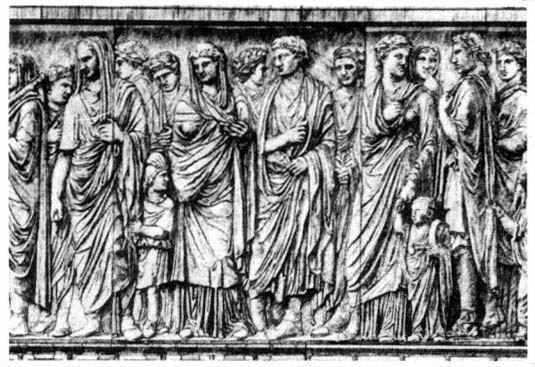 THE RELIGION AND PRIESTS OF THE MAN OF SIN
THE RELIGION AND PRIESTS OF THE MAN OF SIN
The priests of Attis in mythology were called the eunuchs, and the Galli. But they are also known by many other names throughout history as I mentioned above, such as the Curetes (Kuretes, Kor’etes, Quiritis, Curetis, Curitas etc), Corybantes, Idaean Dactyls, Cabiri, Telchines, and the Priesthood of Jupiter or Pan. Pliny had said the Cretans were called Curetes, and that their king was Philistides. Godfrey Higgins had written, “The Cretans are well-known and are mostly named along with the Philistines or Pallitini in the Bible: 2 Sam. viii, 18, xv. 18, xx. 23.
Hence, these are the priests of the man of sin and their savior who represent the war-like tribe in the bible known as the Philistines, Phoenicians, and Sea People etc. who came from the sea and that wreaked havoc on the Egyptians, Hittites and much of the world. In the bible they are also known as the Judeans and Tribe of Judah.
Attis was the Phrygian god of vegetation, and in his self-mutilation, death, and resurrection he represents the fruits of the earth, which die in winter only to rise again in the spring. Strabo (12.5.3) writes that the priests were potentates in “ancient times.” These priests had used to castrate themselves as devotees of the Mother of the Gods which was a symbolic sacrifice of their own individual fertility. On the island of Crete the priests of Agdistis or Cybele and the priests of Diana were all required to be castrated in a ceremony.
The She-Goat: the anti-christ–a woman who becomes a man (Jeremiah 31:22 and Daniel 11:37)
This form of self mutilation, and the sacrifice of ones own fertility by priests in the name of religion had continued for thousands of years. Later it was a form of punishment issued by kings around the world who would then enslave the castrated people as perpetual servants to the king’s court. The king of the Neo-Babylonian Empire, who reigned c. 605 BC – 562 BC, Nebuchadnezzar had all his prisoners of war castrated before using them as servants.
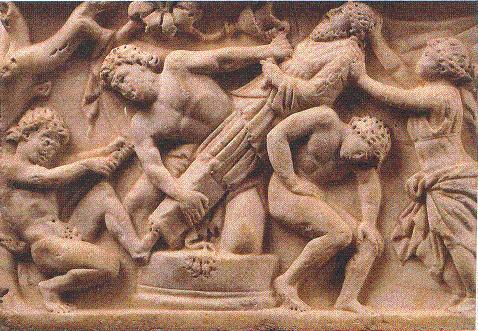 Attis was often represented as a son born of a virgin “in the attitude of a person crucified, with impressions of nail-holes in his hands and feet, but not actually upon a cross ” these virgin-born “Saviours” and “ Slain Ones ;” Crishna, Osiris, Horus, Attys, Adonis, Bacchus, &c.—whether torn in pieces, killed by a boar, or crucified—will all melt into one.
Attis was often represented as a son born of a virgin “in the attitude of a person crucified, with impressions of nail-holes in his hands and feet, but not actually upon a cross ” these virgin-born “Saviours” and “ Slain Ones ;” Crishna, Osiris, Horus, Attys, Adonis, Bacchus, &c.—whether torn in pieces, killed by a boar, or crucified—will all melt into one.
Later during Christian times, Valesus founded a sect in which castration was mandatory before becoming a priest. Latin writer and notable astrologer, Firmicus had said this about his becoming a priest , ‘ I have eaten from the tambourine, I have drunk from the cymbal, I have become a mystic of Attis.’ He later wrote ‘Be of good cheer, oh mystics, the god is saved; for there shall be salvation to Riou from your trials.’ (Firmicus, dc Err. Prof. lig. xxii. l).
“I will stretch out my hand against Judah and against all who live in Jerusalem. I will destroy every remnant of Baal worship in this place, the very names of the idolatrous priests.” – Zephaniah 1:4
THE ANTI-CHRIST IS THE SON OF GOD
The King of Gods, Zeus was also from Crete. According to legend of the sinner, he had fallen asleep and released his seed onto the ground and from there created a Demon with two sexual organs of both male and female. An androgynous being who they called Agdistis. But the gods, fearing Agdistis, cut off the male organ.
In ancient times and even today in many cultures, all demons were not evil or bad. In fact, the English word demon is derived from the Latinized versions, “dæmon” and “daimôn” of the original Greek “δαίμων.” According to Plato, in his Cratylus, the etymology of daimôn/daēmones (δαίμονες: deity/daêmôn δαήμονες) is from tfanuwv, knowing, wise or intelligent.
From the place where the Gods had severed the penis of Agdistis, grew an almond-tree with its fruit ripe. It was here where they say that the daughter of the river, Sangarios had taken the ripe fruit from the tree and placed it in her bosom where the fruit disappeared, but it produced a child who was a boy named Attis, but he was wastended by a he-goat.
The boy was said to be more beautiful than any human, and Agdistis fell in love with him. When he had grown up, Attis’ family had sent him to a city called Pessinos with the intentions of marrying the king’s daughter. During the wedding ceremony as the song of marriage was being sung, in a jealous rage, Agdistis had appeared, and this causes Attis to become insane and he then cut off his own genitals, and so did the father of the bride.
After she saw what she had done to Attis and the father of the bride, Agdistis felt deep sorrow of what she had done to Attis, and persuaded Zeus to grant the body of Attis should neither rot or be decomposed.(Pausanias, Guide to Greece 7.17.8)
Many P. Hall had written in the Secret Teaching of All Ages:
Saviors unnumbered have died for the sins of man and by the hands of man, and through their deaths have interceded in heaven for the souls of their executioners. The martyrdom of the God-Man and the redemption of the world through His blood has been an essential tenet of many great religions. Nearly all these stories can be traced to sun worship, for the glorious orb of day is the Savior who dies annually for every creature within his universe, but year after year rises again victorious from the tomb of winter. Without doubt the doctrine of the crucifixion is based upon the secret traditions of the Ancient Wisdom; it is a constant reminder that the divine nature of man is perpetually crucified upon the animal organism.
Certain of the pagan Mysteries included in the ceremony of initiation the crucifixion of the candidate upon a cross, or the laying of his body upon a cruciform altar. It has been claimed that Apollonius of Tyana (the Antichrist) was initiated into the Arcanum of Egypt in the Great Pyramid, where he hung upon a cross until unconscious and was then laid in the tomb (the coffer) for three days. While his body was unconscious, his soul was thought to pass into the realms of the immortals (the place of death) After it had vanquished death (by recognizing that life is eternal) it returned again to the body, which then rose from the coffer, after which he was hailed as a brother by the priests, who believed that he had returned from the land of the dead. This concept was, in substance, the teaching of the Mysteries.
FORMATION OF A NEW HOLY ROMAN EMPIRE
According to Greek mythology, the first Phrygian Midas had been king of the Moschi (Mushki), also known as Bryges (Brigi) in the western part of archaic Thrace. The meaning of the name Bryges is mountain and as I mentioned above, they came from a mountain called Mount Ida in Crete. They were also called the Brigi- ans ; Brigones is from brig-iones, and the Ionian Brigians.
It is from this name where we get the name of the Celts who are properly called the Celtiberi (Celtebrians) is from celti-bri. A name meaning the” hiding Brigians”, who gave their name to the country of Britain. These people of the mountain who I mentioned above were from Crete and Mount Ida, are known biblically as the Judeans and Tribe of Judah and are the founders of many countries. The tribe in the bible who is scattered amongst nations.
The Jewish-Roman Historian Josephus had claimed that modern Moscow in Russia was founded by the Mosocheni (Moschoi, Moschi, Mushki Mosoch or Meshech), or the Tabalior (Thobelites). Herodotus also mentions the Moschoi (Meshech, Muscovites or Assyrian form, Mushki or Musku). The Moschi are named with Tubal (and Rosh, in certain translations) as principalities of “Gog, prince of Magog” in Ezekiel 38:2 and 39:1, and is considered a Japhetite tribe. They were also known by the names of the Cappadocians which is the Latin word for the Cretans, and later as the Iberes of what was then called Roman Iberia.
A land formerly known as the Soviet Union, and today called Russia. A country that is one of the most Christian nations in all the world.
The Rurikids were the ruling dynasty of Kievan Rus’, who after the year 1199, would also officially become the rulers of the Grand Duchy of Moscow and the founders of the Tsardom of Russia, which today they govern all the lands of modern-day Russia and then some. Ivan III by 1503, had tripled the territory of Moscow as “Ruler of all Russia”, and with his marriage to the niece of the last Byzantine emperor, he established Moscow as the successor state of the Roman Empire, the “Third Rome.”
They had ruled all the lands of modern-day Russia (and later Grand Duchy of Moscow and Tsardom of Russia) until the 17th century. They are one of Europe’s oldest royal houses who trace their legendary genealogy to the first Roman emperor Augustus Caesar.
Russia has also been called the “Third Rome,” or the “New Rome.”
SOURCES:
1. Wikipedia
2. Gnosis

Moe is the founder of GnosticWarrior.com. He is a father, husband, author, martial arts black belt, and an expert in Gnosticism, the occult, and esotericism.

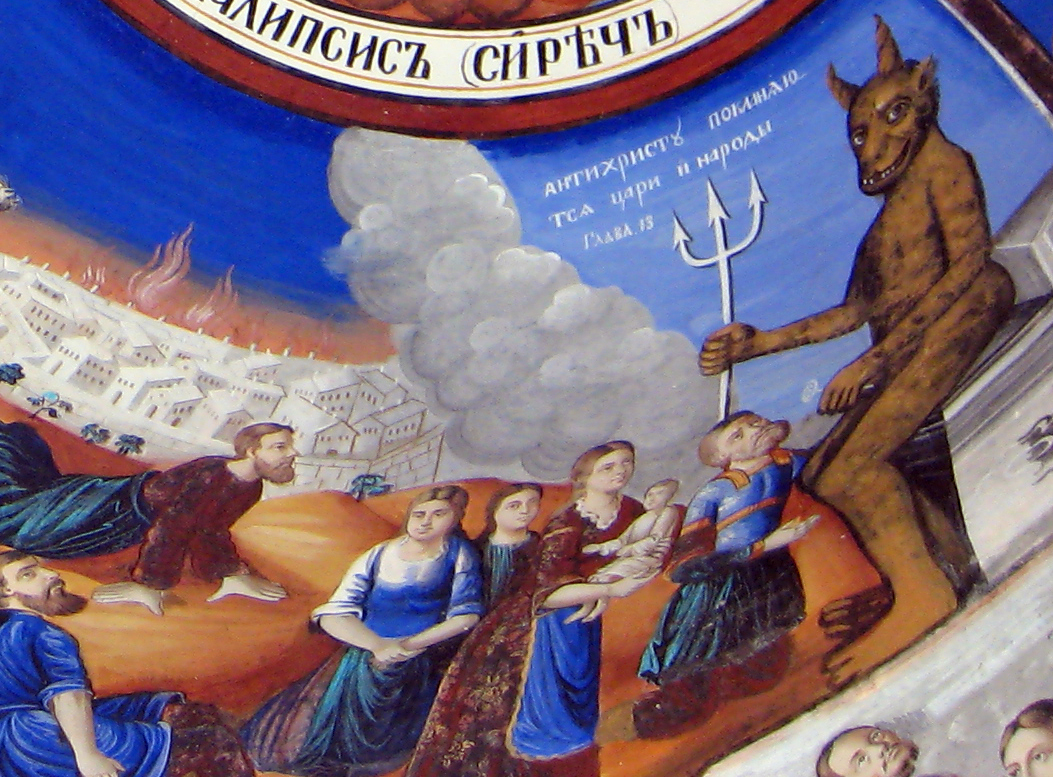

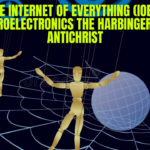
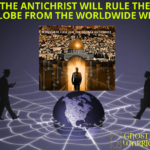
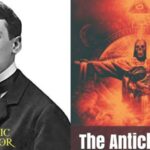

Not in his image. I think Author, John Lamb Lash, enlightens us about the possibility it is all upside down.
His Ego seems to bring an eclipse to the sophist light he shares. In my opinion, John is no Gnostic but a Sophist.
Since the being called God by the Hebrews is also worshiped as God by the Christians, and since the writings concerning the “man of sin” were from Christians and to Christians, wouldn’t the “man of sin” being described by the Christians be quite different from any being they associated with their God?
I mean to say, they think of the being called Jesus, whom they call “the son of God”, as directly and positively associated with their God, which Gnostic Teachers told us is Yaldaboath, the Demiurge. So, wouldn’t the being THEY (the Christians) call “the man of sin” be a future prophetic figure that is in opposition to their God?
If the Christian God is the Demiurge, and they view “the Antichrist”, who is in opposition to the Demiurge, as “bad”, then wouldn’t the coming World Teacher be the “Christian Antichrist”? …since he would aid the world in freeing itself from the Demiurge, the Jewish and Christian God?
*** Since we are going with “the Christians and Jews are wrong in who they worship”, then wouldn’t their mistakenly-called “Antichrist” be the coming being who is esoterically known as The Christ, World Teacher, and so on?
Wouldn’t the son of the Demiurge (which I guess isn’t really a thing?) be the esoteric viewpoint’s “Antichrist”, were there to exactly be such a thing? I never heard of an esoteric Antichrist parallel, that I recall. Although, I suppose the “second coming of Jesus Christ” in the later part of the Bible’s book of Revelation would count? Since the thinking is that the writers “have that backwards”.
There is SO much going on with all of this. And the variables in this equation! To try to make a one sentence question summary is difficult.
I guess, since the Christian writings are mistakenly backward, wouldn’t their ‘Antichrist bad being’ to come actually be “good”, with his opposition to the Demiurge?
Wouldn’t the Christians just be wrong about who and what their “Antichrist” really is, since Christians don’t think of themselves as needing to be “saved from their God”, so to speak?
Can you answer this?
I think when I kept re-phrasing, I got it all out there decently.